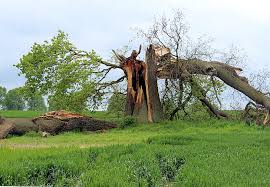A Kansas State University horticulture expert is urging landowners to carefully evaluate storm-damaged trees before deciding whether to keep them. Cynthia Domenghini says trees with split bark exposing the cambium layer or a split main trunk are unlikely to survive and are better off being removed. Trees that have lost so many limbs their structure is compromised should also be replaced.
Even if damaged trees sprout new growth, they are under significant stress, making them vulnerable to disease, pests, and future breakage. For trees with minimal damage, Domenghini recommends pruning broken branches properly by cutting at the collar, not flush with the trunk, to help wounds heal faster. Large limbs should be cut in stages to prevent tearing—first from underneath, then above, and finally at the collar to remove the stub.
Gardeners in Kansas can also begin planting warm-season vegetables, as soil temperatures are now high enough. Tomatoes can go in at 55°F, while peppers, cucumbers, melons, and squash should wait until 60°F. However, Domenghini advises delaying winter squash and pumpkin until mid- to late June to avoid early squash bug damage. Young plants should be hardened off and protected from strong winds using temporary windbreaks. Local extension offices can offer further guidance.













